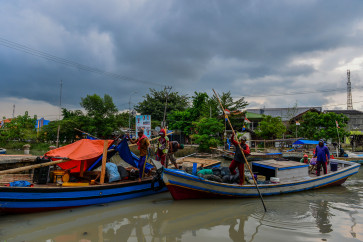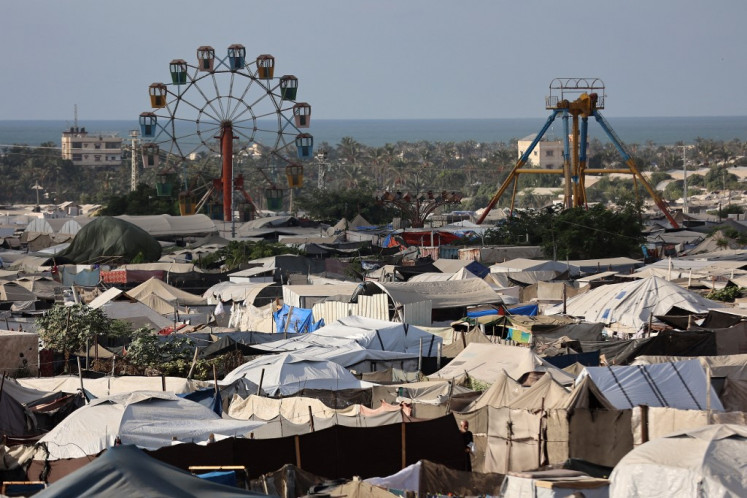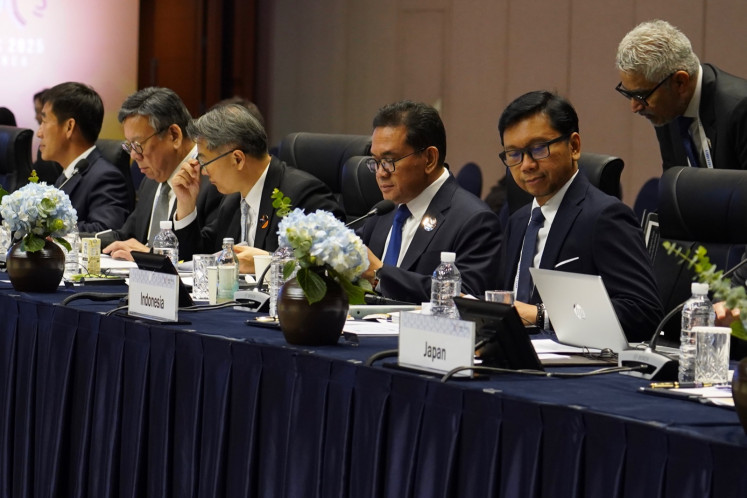Popular Reads
Top Results
Can't find what you're looking for?
View all search resultsPopular Reads
Top Results
Can't find what you're looking for?
View all search resultsCentral parts of Sumatra face more blackouts in December
Students in West Sumatra, Jambi and Jiau provinces will be struggling to finish their homework before the lights go off, as state-owned power company PT PLN has announced it will impose a rolling blackout policy in the region through the end of the year due to power shortages
Change text size
Gift Premium Articles
to Anyone
Students in West Sumatra, Jambi and Jiau provinces will be struggling to finish their homework before the lights go off, as state-owned power company PT PLN has announced it will impose a rolling blackout policy in the region through the end of the year due to power shortages.
Insufficient rainfall during the November-December period has been blamed for the situation in this central part of Sumatra Island.
"The rainfall is not as high as was expected," General manager of PLN's West Sumatra Region Hudiono said Thursday.
The company had expected higher rainfalls in November-December, which would have raised the water levels in Maninjau and Singkarak Lakes as well as in Koto Panjang Dam to the level required to run the hydroelectric power plants, Hudiono said.
The Meteorology and Geophysics Agency similarly had predicted that November would see more rains than October did. The reality, however, turned out to be the opposite.
The November rainfall was much lower as compared to October. As a result the water elevation in both the lakes and the dam has significantly fallen below the average, with Koto Panjang dam suffering the most, Hudiono said.
Koto Panjang Dam has a water level operating limit of 73.5 meters elevation (mEl). As of Thursday, it was just 74.7 mEl.
Singkarak Lake is just as critical. Having an operation limit of 360.75 mEl, it was at 361.32 mEl on Thursday morning.
The condition has worsened since some of the region's power plants are also in need of repair. They are PLTA (hydroelectric power plant) Singkarak, PLTA Maninjau, PLTU (steam-powered electric generator) Ombilin and PLTG (gas-powered electric generator) Paul Limo. All are in West Sumatra.
At PLTA Koto Panjang, of its total capacity of 114 MW, only one generator can operate during the day, producing 20 MW of electricity. Two units are running at night and combine to produce 44 MW.
"Koto Panjang can only increase its production if it has sufficient rainfall, thereby raising the dam's water elevation," Hudiono said.
Sumatra's central region has a combined daily production of 400 MW of electricity from all its power plants, while the peak load in the evening can reach up to 700 MW.
It receives the additional required 300 MW from southern Sumatra. Yet, due to some of southern Sumatra's plants undergoing maintenance, that network can now only supply 160 MW.
"That's why we have to implement the rolling blackouts to reduce consumption by about 150 MW," he said.
Hudiono, therefore, strongly suggested that people reduce electrical demand, especially during the peak load times, by doing things such as turning off lamps or TVs that are not being used.
In the West Sumatra capital of Padang, PLN has already issued a blackout schedule for next week, from 6:01 p.m. to 9:00 p.m. and from 9:01 p.m to midnight, depending on the area.










